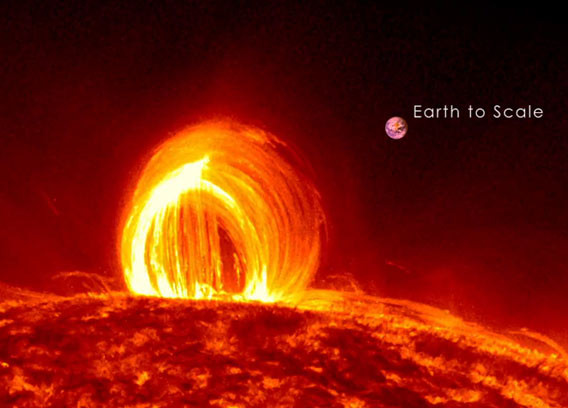Create a free profile to get unlimited access to exclusive videos, sweepstakes, and more!
All That Plasma Will Be Lost in Time, Like Tears in Rain

If you look at our Sun the right way, it is magnificent. For proof, I offer this stunningly beautiful video of the nearest star taken on July 19, 2012 by NASAâs Solar Dynamics Observatory. If you can watch this without your jaw hanging open and your mind aflame with wonder, then I cannot help you.
What youâre seeing is the profound impact of magnetism on the material in the Sun. Iâve described this effect before (with lots of juicy details here), but in a nutshell: The gas inside the Sun is so hot itâs ionized, stripped of electrons. When that happens itâs more beholden to magnetism than gravity, and when the magnetic field lines pierce the Sunâs surface they form loops along which the ionized gas (called plasma) flows along them.
The bright flare happens when the stored magnetic energy erupts outward, usually due to what is essentially a short-circuit in the field. That happens near the beginning of the video, and is so bright it saturates SDOâs detectors (and you can see repeated ghost images to the upper left and right of the flare as the light reflects inside SDOâs optics). Then things settle down, and thatâs when the beauty really begins: The plasma flows down the loops, raining down onto the Sunâs surface.
And it goes on and on. This video represents a total elapsed time of over 21 hours.* The energy flowing along those magnetic loops is immense, enough to power our entire planet for many millennia. Note the part about a minute in when the size of the Earth is shown for comparison. Incredible.
Although this looks like fire, itâs not. The images used to make this video are in the far ultraviolet, showing gas at a temperature of nearly 100,000° Celsius (180,000° F). The color is added after the fact to make details easier to seeâbut those fiery red, yellows, and oranges do tickle the imagination, donât they? The color adds to the impression of dancing energy and heat.
That barely constrained violence can be difficult to square with the grace and elegance of the motion. The Sun can damage our civilization, yet we also depend on it for our existence. But there you go: The Universe is full of such dichotomies.
It is harsh, inhospitable, destructive, and capable of crushing indifference.
It is pleasing, habitable, serene, and capable of life-altering beauty.
I wouldnât have it any other way.
* [Correction: I had originally said this eruption lasted over nine hours. While technically correct, it actually went on for over 21 hours.]Â














